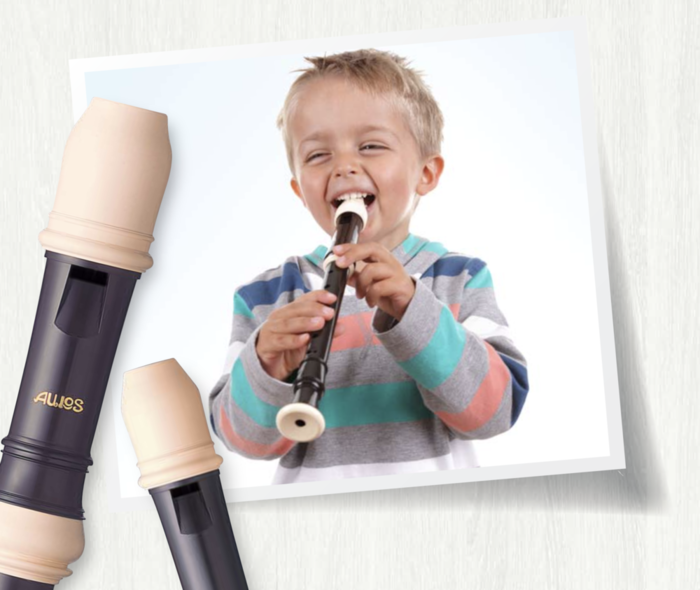Get well prepared for music school with an AULOS recorder!
The origins of the delicate, double-tube wind instrument can be traced back as far as the third millennium BC –the ancient Egyptians called it Memet, which is the direct ancestor of the recorder.
In ancient Greece, the popular pair of flutes known as "Aulos" (from ancient Greek αὐλός for "tube") were a further development and were also a popular template for numerous motifs of ceremonial, cultural and everyday scenes – there’s still something mythical about the word "Aulos".
The recorder specialist AULOS from Japan took up the spirit and antiquity of the recorder’s ancestor to give their high-quality recorders a proper name.
The pipes of the ancient "Aulos" were made of bones, reeds or wood - more than two and a half thousand years later, not only the shape of the most common recorder has changed. In 1955, AULOS took a logical step forward with their recorders; AULOS recorders were the first to be made out of ABS resin.
This material is distinguishable by its complete insensitivity to moisture and the highest bite resistance, making AULOS recorders the first choice for music schools.

The consistently high quality standards are achieved through the patented, special interior design and precision molds. All AULOS recorders are not only in harmony with each other, they also harmonise perfectly to everything from the ‘Garklein’ to the bass flute.
Four revolutionary features:
I. Unique AULOS chamber design
In contrast to the wooden recorder, the head consists of several construction parts. Cavities in the wall guarantee a uniform wall thickness. This results in a greater resonance and a characteristic musical expression. At the same time, the recorder head is far less susceptible to the effects of temperature when playing.
II. Concave bell
The unique bell on the foot allows a smooth flow of air. The result is a more beautiful sound with more volume.
III. Double-walled connection
The connection between the head and middle section is a critical zone for recorders. AULOS makes this area double-walled. Even when they are played for a long time, there are no changes; the walls remain smooth – so there is no air turbulence.
IV. Adjustable thumb rest
The thumb rest for the right thumb allows optimal holding of the recorder. The recorder is comfortably and stably fixed so that the support is easy to clip and relocate. It also prevents the flute from rolling away if it is dropped.
From the ambitious beginner to the soloist - the flute series from AULOS
Symphony
The Symphony Series instruments are the highest quality AULOS models. Outstanding intonation and easy blowing allow musicians to make the finest differences in airflow from the lowest to the highest notes for a highly artistic expression: a deep and full register, sonorous mids and delicate highs. The Symphony series brings joy to both the soloist and the ensemble in recorder playing.
Alouette
The Alouette models are especially suitable for children who start playing the recorder. They have a clear, bright tone and are available in one or two pieces.
Elite
The Elite series is also ideal for beginners and equipped is with double holes.
Robin and Bel Canto
The patented AULOS chamber design is featured in the Robin and Bel Canto models. All flutes in this series are in three parts and have a curved wind tunnel for a free playing feel, without resistance.
Good to know!
We are often asked what the difference is between Baroque and German fingering:
The vast majority of school recorders are offered in both fingerings, so when you are buying one, you need to make a decision between the two types.
The most important distinguishing feature is the F tone (soprano), which is easier to grasp in the German fingering - but as soon as you leave the C major scale, the intonation may be compromised.
Attention: Often the double holes C / C# and D / D# (soprano recorder) are considered characteristic of the Baroque fingering. Both fingerings are possible with the double holes.
The baroque fingering is easily recognised by the larger tone hole for the tones f2 / f3 (soprano recorder) or b1 / b2 (alto recorder), compared to the German fingering method.
Photos: Toyama Musical Instrument Co., Ltd. / AULOS / Mandy Mellenthin



